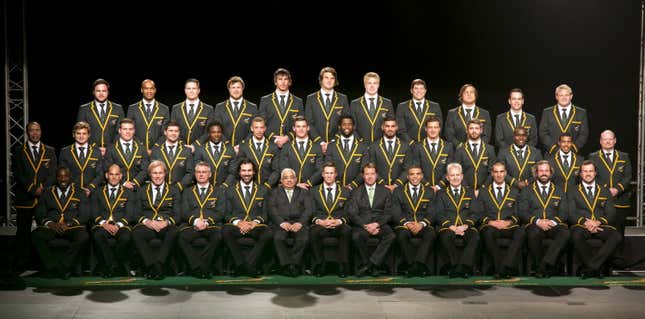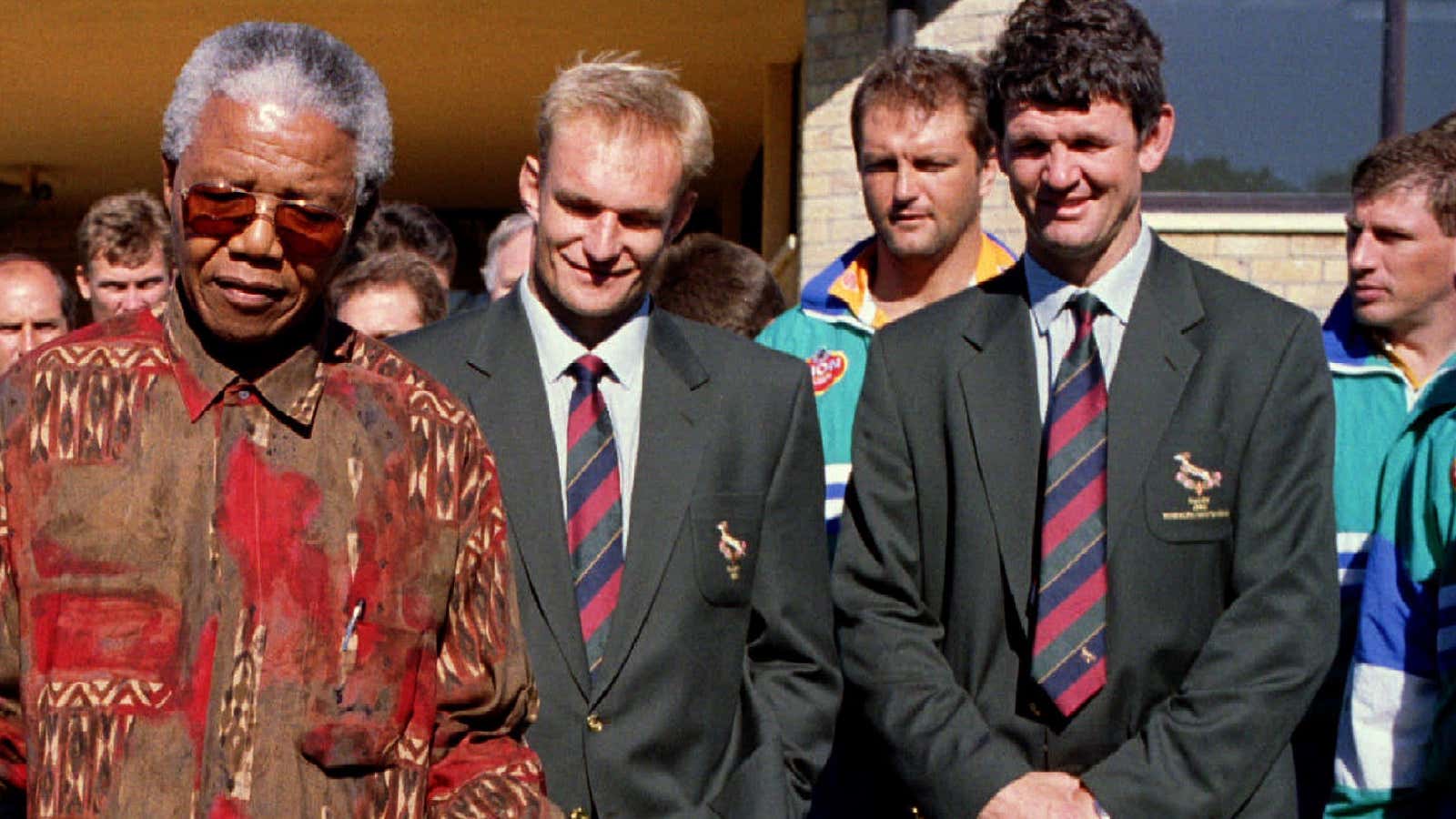Under Apartheid, white minority rule segregated all aspects of life in South Africa. There were separate education system for blacks and whites, separate public amenities, and even separate sporting codes. After the formal end of Apartheid in 1994, Nelson Mandela, the country’s first democratically elected president, set himself a near-impossible task: turning rugby—once considered a “whites-only” sport—from a symbol of prejudice and oppression into a symbol of national unity. For him, the 1995 Rugby World Cup—the first international tournament that South Africa participated in after years of international sanctions—was the perfect showcase for this.
The Springboks, South Africa’s national rugby team, won the tournament that year, offering a brief moment of euphoric unity for a country which would still have to deal with the legacy of Apartheid in coming years.
Twenty years after the historic 1995 world cup, rugby is at the center of debate in South Africa again. At issue is whether the national rugby team, which will represent the country at the Rugby World Cup in just two weeks, is too white.
The Springboks team this year is made up of 23 white and 8 black players, in a country where 80.5% of the population is black African, according to the recent population estimates.

The issue here is not the lack of black rugby talent. A study shows that the handful of black players picked for the team are not getting their fair share of playing time. Critics say that their talent is wasted on either warming the bench or carrying water bottles for their white teammates while hoping for the opportunity to take the field.
You’ll find a similar pattern of race-based exclusion across the country’s economy and labor market, with black South Africans frequently relegated to “backbencher” roles in management structures throughout the private sector.
Too slow to change
The great myth of South Africa as a “Rainbow Nation”—one where black and white South Africans put their past differences aside and unite for the greater good—remains just a myth. And it’s one that is slowly fading.
It’s fading as black South Africans—27.9% of whom are unemployed (pdf, pp. 27-28)—come to the realization that while South Africa is a different country now, it is one where race remains a determinant of power. The clamoring for greater representation—more black players on the rugby team, more black professors at universities, and more black people in managerial positions—tells us that black South Africans do not yet feel adequately represented in their home country. And the statistics back them up. South Africa’s labor market is more than 90% non-white (pdf, Appendix 1), but fewer than 23% (pdf, table 9) of top management roles in the country’s private sector are held by non-white South Africans.
Figuring out why change has been so slow is not a clear-cut task. But revisiting the story of the Springboks and Mandela’s rationale for trying to unify South Africa through their 1995 world cup appearance is a good reminder of why such change is sought.
